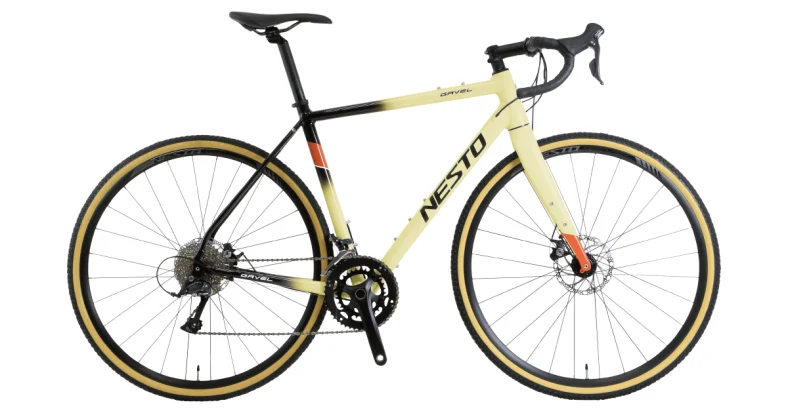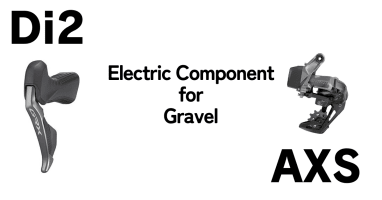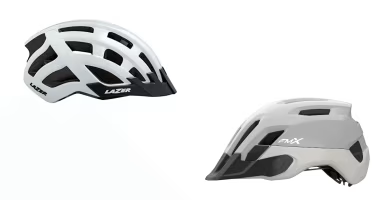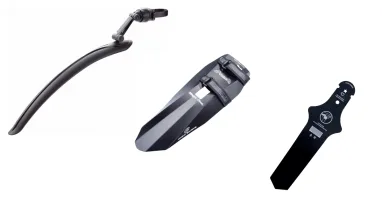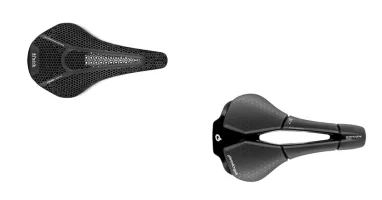Language Menu
- 日本語
- English
What is a gravel bike? What is the difference from a road bike or MTB?
Gravel bikes have been rapidly growing in popularity over the past few years. The following is a summary of what gravel bikes are and what makes them different from road bikes and MTBs.
Modified at: 2023.7.6Posted at: 2022.8.24
Table Of Contents
“Gravel bike” without a clear definition
While a road bike is defined to some extent as “a sport bike with drop handlebars and a forward leaning posture” and an MTB as "a sport bike with suspension and fat tires that can be used to ride over rough roads and mountainous terrain. However, there is no clear definition for gravel bikes.
Even if gravel bikes do not have a definition, they do have some characteristics.
- the geometry is slightly upright
- have tire clearance to accommodate larger tires
- based on a road bike
- with tires larger than 30C to enhance riding performance
- equipped with disc brakes to prevent braking failure even on rough roads
The following is a list of the requirements. (2) to (5) are the conditions that "aren’t those also found in ordinary road bicycles? The major difference is the geometry in (1).
What is the difference between a road bike and a gravel bike?
Road bikes and gravel bikes are nearly identical rides. The differences, if any, would be geometry and tires.
In the case of road bikes, the geometry is designed to facilitate forward lean to reduce aerodynamic drag as much as possible, specifically, the front of the bike is designed to drop down.
On the other hand, gravel bikes, depending on the manufacturer, will often have an upright geometry with the handlebars pointing slightly upward. This geometry is similar to that of cyclocross bikes in the same road sport bicycle category.
For example, compare the geometry of Giant’s DEFY ADVANCED 2 road bike and the REVOLT 2 gravel bike.

| Model | Size | A | E | I | Height |
|---|---|---|---|---|---|
| DEFY ADVANCED 2 | 445(S) | 445 | 71.8 | 546 | 165〜175 |
| REVOLT 2 | 430(XS) | 430 | 70.0 | 556 | 160〜175 |
The two bikes are almost the same height, but the REVOLT 2 has a 1.5cm shorter seat tube (A), a 1cm higher stack (I), and a slightly shallower head angle (E). In other words, it is "a frame with the hips down and the shoulders up.
Although they both look almost identical, these differences in riding posture lead to greater comfort and safety on gravel.
In terms of tires, most road bikes these days are 700-25C size, but gravel bikes use larger tires similar to mountain bikes, such as 700-32C or larger, or 700-40C depending on the model.
These two points are the differences between road and gravel bikes.
What is the difference between an MTB and a gravel bike?
With their large tires and upright geometry, gravel bikes are sport bikes similar to MTBs, except that they have drop handlebars.
Other than the handlebars, the main difference between MTBs and gravel bikes is the suspension: MTBs have front and rear suspension, while gravel bikes rarely have suspension.
The reason why MTBs need suspension is to cope with the impact of going over bumps or jumping on the bank. Conversely, gravel bikes are not designed for such riding.

In fact, if you look at the specs for gravel bike wheels, you may see a note that says “jump no more than 10 cm from the ground”. This means that it is intended to be enough to get over bumps, not jumps.
With gravel roads, you can ride on “just roads” that are a little gougey but not road-legal, but you should assume that you cannot do things like downhills on dirt roads that are designed for jumping.
Halfway between the two in terms of specifications. That’s why gravel bikes are so much fun.
As you can see, gravel bikes are ill-defined, and at worst, they are halfway sports bikes, similar to road bikes but not as rough as MTBs. However, this half-bakedness is what makes gravel bikes so appealing.
For example, a road bike cannot ride on gravel roads or unpaved forest roads, but a gravel bike can incorporate unpaved roads into its cycling route.
MTBs are good for mountain roads, but their weight drags them down when riding on paved roads, while gravel bikes are more nimble than MTBs.
The appeal of gravel bikes is that they can be easily converted to either street riding specifications or travel specifications depending on the choice of tires and wheels.
Normally, you can use gravel wheels and tires for city riding, but on weekends, you can enjoy cycling on forest roads with gravel tires. Of course, the same thing can be done with road bikes, but gravel bikes have wider tire clearance, allowing you to enjoy larger tires such as 700-40C.
If you want to specialize in one or the other, it is best to have a road bike and an MTB respectively, but the charm of a gravel bike is that you can enjoy both with a single bike.
What makes it different from other bicycles? Gravel Bike Features
Gravel bikes are road bikes optimized for rough roads, and we explain what makes them different from road bikes, MTBs, and other sports bicycles.
What is the difference between a gravel bike and a cyclocross bike?
Cyclocross bikes for cyclocross racing on muddy courses look and function much like gravel bikes. What are the differences between them, and how should we separate them for selection and use?
Current Article
What is a gravel bike? What is the difference from a road bike or MTB?
Gravel bikes have been rapidly growing in popularity over the past few years. The following is a summary of what gravel bikes are and what makes them different from road bikes and MTBs.
What's the difference between a road bike and a gravel bike? How to tell the difference between them
Gravel bikes, a derivative category of road bikes, look almost like road bikes, and beginners may not be able to tell them apart at a glance. In this article, we will introduce some points to distinguish gravel bikes.
What you need to know before buying a gravel bike
Gravel bikes are rapidly growing in popularity. But for those who are worried about buying one, with some people saying they regret buying one, we have compiled a list of things you should know before you buy.
Bicycle travel, which involves biking around a destination, is an activity that is growing in popularity. However, the type of bicycle you choose will greatly affect the enjoyment and safety of your trip. In this article, we will discuss the best types of sports bicycles for bicycle travel and how to choose the right one.
Is it a good idea to use a gravel bike for commuting to work or school? No?
Due to health consciousness and other factors, more and more people are commuting to work and school by bicycle. In this issue, we will compare and verify whether gravel bikes are a good choice for commuting to work and school, based on the characteristics of each bike type and the different routes to work and school.
How to convert a hybrid bike into a gravel bike
Hybrid bikes and gravel bikes are similar in concept. Hybrid bikes can be converted to gravel with little replacement cost, depending on the component parts.
Don't want a gravel bike? Will you regret buying one?
Gravel bikes are rapidly gaining popularity in the sports bicycle community, but some buyers say they don't need them and regret buying them. In this issue, we summarize why people say they don't need a gravel bike and how to enjoy such a gravel bike.
Is there a weight limit for gravel bikes? How do I choose if I'm heavy?
In some cases, sport bicycles such as gravel bikes are made lightweight, which limits the weight they can accommodate. In this article, we summarize how to choose a gravel bike for heavier riders.
Current Article
What is a gravel bike? What is the difference from a road bike or MTB?
Gravel bikes have been rapidly growing in popularity over the past few years. The following is a summary of what gravel bikes are and what makes them different from road bikes and MTBs.
Why are long rides on gravel bikes tiring? How to avoid fatigue
Gravel bikes are said to be "unsuitable for long rides." Why do long rides on gravel bikes become tiring? We have summarized what you can do to avoid fatigue.
What kind of road is gravel? The kind of riding a gravel bike is designed to do
What kind of "gravel" roads can gravel bikes be ridden on? We have compiled a definition and a summary of how the manufacturer expects you to ride it, and how it is not expected to be ridden.
